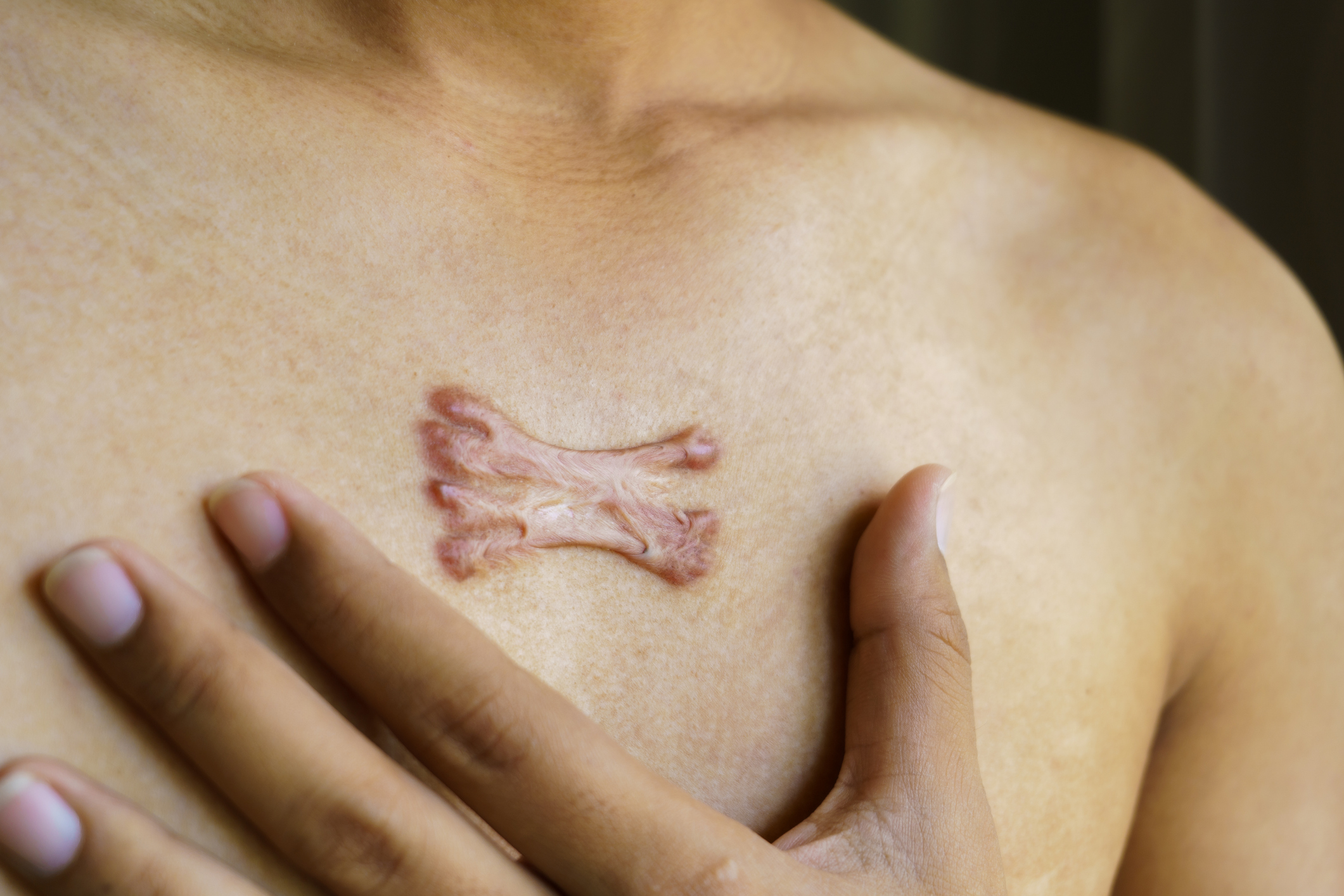A keloid is a type of thick, raised scar that forms as a result of abnormal healing of the skin after an injury or incision. Unlike normal scars, keloids extend beyond the original boundaries of the wound and can continue to grow over time...
READ MORE
A keloid is a type of thick, raised scar that forms as a result of abnormal healing of the skin after an injury or incision. Unlike normal scars, keloids extend beyond the original boundaries of the wound and can continue to grow over time. They are caused by an overproduction of collagen during the healing process. Keloids can vary in size and may appear reddish or dark brown. They can be itchy, tender, or painful and may affect the appearance and function of the affected area.
During the treatment of keloids, various approaches may be employed to reduce their size and appearance. Common treatments include:
Corticosteroid Injections: These help to reduce inflammation and shrink the keloid.
Cryotherapy: This involves freezing the keloid with liquid nitrogen to decrease its size.
Laser Therapy: Laser treatment can help flatten and reduce the color of the keloid.
Silicone Gel Sheets: Applying silicone sheets or gels can help soften and flatten the keloid.
These treatments might cause some temporary discomfort or irritation. During procedures like laser therapy or cryotherapy, patients may experience a mild burning or stinging sensation. Topical numbing creams or cooling devices may be used to alleviate discomfort.


After treatment, the area where the keloid was treated may be red, swollen, or tender, resembling mild sunburn. These effects are generally temporary and should resolve within a few days to weeks. It’s important to follow the post-treatment care instructions, which may include applying prescribed creams, keeping the area clean, and avoiding direct sun exposure to prevent pigmentation changes. Regular follow-up appointments may be necessary to monitor the keloid’s response to treatment and make any necessary adjustments.
Copyright © Sparsh. All Rights Reserved by Multiple Revolution